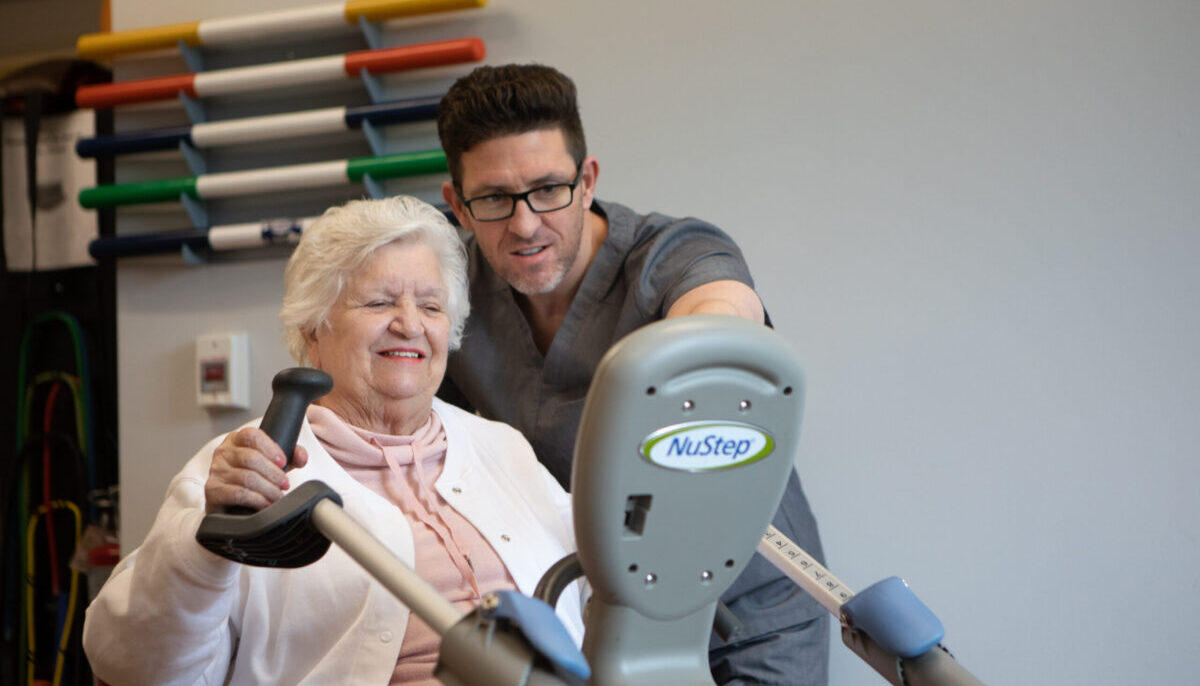Diabetes and Aging: Why a CCRC May Be the Key to Better Health

According to the American Diabetes Association, almost 30% of adults 65 and older—over 16.5 million seniors—have diabetes, a chronic condition that affects how the body regulates blood sugar.
The good news is that you can manage diabetes by making lifestyle changes, taking medication or using a combination of both to stay healthy and active for years to come. A CCRC (continuing care retirement community) can be a valuable partner in managing your diabetes.
Better Diabetes Management in a CCRC
The most common type of diabetes for seniors is Type 2, in which the body can’t produce enough insulin—a hormone that regulates blood sugar levels—or it doesn’t use the insulin it has effectively. It can be more challenging for seniors because some symptoms—like fatigue or blurry vision—are easy to mistake for normal aging.
A CCRC offers helpful resources to educate and support residents in managing the disease. Seniors who move into a CCRC can benefit from the community’s increased focus on wellness, physical activity and proper nutrition.
Trained Assisted Living and Skilled Nursing associates can help residents manage medications, check blood sugar levels, monitor nutrition and engage in daily exercise. They also ensure that diabetic residents receive regular eye exams and podiatrist visits to monitor progress and help prevent complications.
Nutrition Management
Communities like Meadow Ridge provide support to ensure residents receive the daily nutrients and healthy meals they need to achieve their desired weight and blood glucose goals. Menus that cater to residents with diabetes include carb-conscious options that still offer variety and flavor. The menus also include fruits, whole grains, lean protein and vegetables—foods that are high in nutritional value and low in calories.
Fitness and Wellness Programs
Proper nutrition is critical, but it’s not the only factor in diabetes management. Physical activity is essential for helping individuals with diabetes manage their weight effectively. According to the National Council on Aging, the key benefit of exercise is that it enhances the body’s sensitivity to insulin, which helps turn blood glucose into energy. It can also mitigate the strength and mobility issues associated with diabetes.
People with diabetes need to exercise for at least 30 minutes a day, or 150 minutes a week, to manage their weight and increase their body’s sensitivity to insulin. Aerobic exercises, such as dancing, walking, swimming and bicycling, which are available at most communities, also help keep blood glucose levels stable. Senior living communities like Meadow Ridge offer fitness centers with fitness coaching and programs to improve independence, functionality and quality of life.
Support and education
Many senior living communities provide the necessary resources to help residents and their families understand diabetes and its impact on older adults. The on-site medical staff can explain how to monitor the disease and what to do when blood glucose levels change. They can also help residents with nutritional topics, assist them in effectively communicating with their physicians and encourage greater independence that enhances their quality of life. Many communities offer monthly educational classes on daily diabetes-management issues and tips on how to manage the chronic condition.
These services provide peace of mind for both residents and their families, enabling new residents to move to a CCRC with confidence, knowing that an experienced and knowledgeable team is available to support them in managing their diabetes.